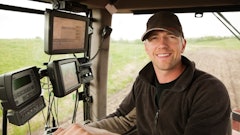‘People have been gored, impaled and crushed,” reports safety consultant Rick Kaletsky, speaking about mishaps resulting from the improper handling of forklifts in warehouses.
Indeed, tens of thousands of injuries related to powered industrial trucks take place in workplaces each year. Injuries occur for several reasons: lift trucks are inadvertently driven off loading docks or fall between docks and an unsecured trailer, or pallets fall while on elevated pallets and tines.
Most incidents also involve property damage, including damage to stored warehouse materials, racks and machinery.
According to the federal Occupational Safety and Health Administration (OSHA), most employee injuries and property damage can be attributed to a lack of safe operating procedures or safety-rule enforcement, and insufficient or inadequate training. Government safety regulations say driving a forklift requires special training. In fact, due to the number of incidents each year, such training is more important today than ever before.
Supervalu Inc. has always placed a high value on proper training for forklift operators, relates Jim Koskan, corporate director of risk control for the giant wholesale distributor based in Minneapolis.
“These machines are effective product-movement devices and can add much to the operational efficiencies of warehouse operations,” he says. “However, if not operated properly, that advantage is lost. Unsafe operation will lead to lost operational efficiency.”
It can also lead to serious injury and death. Kaletsky, author of OSHA Inspections: Preparation and Response, available from the National Safety Council, says increasing workplace mishaps prompted the government agency to issue more elaborate training regulations in December 1998.
“The former training was thin and non-specific,” says Kaletsky, “but we can also say that the need for better training was partially a result of how many serious injuries and fatalities have occurred relating to forklifts. Most of those accidents involved a person getting hit.”
Training Options
Before the issuance of the OSHA regulations, there were always standards for low-lift and high-lift trucks and training requirements, according to Jean Bilitz, a workplace safety editor with J.J. Keller & Associates, a Neenah, WI-based firm that offers consulting services and training tools.
“But, of course, employers pay more attention to OSHA when they put out requirements. Its rules on operator training were more detailed than the previous operator training requirement, which was just a couple of sentences,” she recalls.
Years ago, training typically involved a short video presentation, often provided by the equipment supplier, and some one-on-one instruction. After that, the operator’s skills were developed by simply operating the equipment on the job.
“Today, the classroom and hands-on components are far more robust,” says Supervalu’s Koskan. “Most organizations also incorporate structured, hands-on training and follow-up. In addition, re-training is also common.”
There are several warehouse and forklift safety training options available today. Warehouse operators can choose from pre-packaged training kits, outsourced training and in-house training. They need to decide which one is most suitable for their workplaces to ensure that operators are getting comprehensive training.
“The units available today are more complex and do require more training than in the past,” says Koskan. “All three methods can be effective. Each organization will make choices based on what fits into their structure best.
“However, most organizations that I am aware of will customize the approach taken to better reflect the unique needs of their operations,” he continues. “Smaller organizations have less flexibility in that regard due to expense, so they often utilize in-house or supplier-provided materials.”
Safety officials say that the best results come from combining several of the training methods. One size does not fit all operations, nor does it meet OSHA requirements.
“If there is any kind of pre-packaged training kit, you have to supplement it by relating it to the safe operation of the kinds of fork trucks you use,” advises Kaletsky, the consultant. “If you want outsourced training, use it. But you can’t just use it unless you bring them into your place. You want these trainers in your place so they can see where the ramps and aisles are.”
J.J. Keller’s Bilitz says that training typically includes a video and an employee workbook. A pre-packaged kit would probably also include a computer-based learning product where the employee sits down and goes through a computer program.
However, she adds that such “stand-alone” training is not going to meet OSHA’s requirements because it is not equipment-specific or workplace-specific. The training would have to be used in conjunction with one of the other two training methods.
“There would need to be an instructor-led program in the workplace,” she says.
“That’s another concern with outsourced training where you send employees to a class. They may or may not learn on the same type of truck that they use in their workplace, and still it’s going to a class and learning to drive a truck. It’s not going to address the workplace-specific environment that they’re at, and it wouldn’t meet the OSHA requirements either.”
Train The Trainers
In-house training obviously involves the employer and the familiar surroundings where forklift operators will operate. The key is to have qualified people on board to conduct the training properly.
“Evaluation by the employer has to be done by observing the worker operating the equipment in the workplace,” advises J.J. Keller’s Bilitz. “So the employer’s going to have to be involved in the training.”
Such a scenario is easy “if you do have someone qualified to do the training who is competent, familiar with the equipment and experienced. Then you’re training on the equipment the people are going to be driving and they’re fully aware of the operational hazards in the workplace,” she says.
Trainers do not have to undergo an annual certification process or attend special schools. OSHA mandates that training and evaluation be conducted by “persons who have the knowledge, training and experience to train powered industrial truck operators and evaluate their competence.”
Kaletsky adds that OSHA offers free training materials on its Web site for employers to use (osha.gov).
“When you are doing your training, you have to make sure that it is extensive,” he points out. “The training has to center on driving safely, understanding the brakes and how long it takes to stop,” says Kaletsky. “In a warehouse, there are blind spots and greater chances of workers just appearing than on an open road. The horn has to be working. They have to make sure the tires are right as well, making sure the emergency and regular brakes work right. The steering has to be effective. They need to understand about the capacity of the fork truck.
“And here is an idea: whatever the maximum rated capacity is—the weight of the load they can lift—what that maximum means is everything else with that fork truck that could affect capacity is right, including counter-weight, the tires, the forks, the fork angle, how the loads are on the forks.
“Just like with a crane, when you lift those forks, you are changing the capacity. If things are further out on the forks, you are changing it as well. For example, if you were to hold an object down at your knee level, you can hold it for x amount of time. As you raise your arm outward though, the amount of time you can hold it will drastically reduce,” he says.
That is the sort of real-life detail and focus on the fundamentals that will result in a first-rate training program. Assuming one is developed or purchased, and then staged, what is next?
“The machines themselves are better designed from an ergonomic perspective and easier to operate,” concludes Supervalu’s Koskan. “But the responsibilities of operators are getting more complex, especially in terms of computer interfaces with the inventory they are transporting.”
The bottom line is this: the need for first-rate safety training will continue, and even increase in importance.















